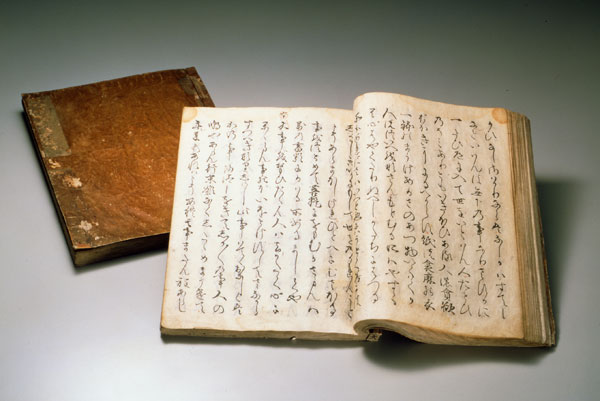Collection
Sagabon, tsurezuregusa
1608
No. 03793
Among the imperial court, the samurai class, and even the common populace, printing with type and publishing bloomed during the period spanning the end of the 16th century to the early part of the 17th century. The sagabon released by such men as Koetsu Hongami and Soan Suminokura are known today as examples of popular publishing.
They are called sagabon because they were mainly issued in Saga village near Kyoto. The writing was in the semi-cursive or the cursive style of Chinese characters, and in addition to featuring covers, papers, illustrations, and bindings of great artistic and technical merit, their use of wooden printing type made by linking 2 to 4 letters was distinctive. Employing this kind of type, Koetsu and others mainly published examples of classical literature, including Ise Monogatari and Hojoki. The sagabon presented here, Tsurezuregusa, is a woodblock print version of the famous essay written by Kenko Yoshida in the Kamakura period. It was published around 1600.
Exhibitions and collections
-
- Latest exhibition information
- The latest information is provided for visitors about exhibitions, events and schedules.
-
- List of temporary exhibitions
- Information is provided on temporary exhibitions underway and related events.
-
- General exhibition
- Here we introduce our general exhibition.
-
- VR Theater lineup
- Details of the programs currently being shown.
-
- Collection hunting
- Here we introduce some of the artifacts from our collection.

